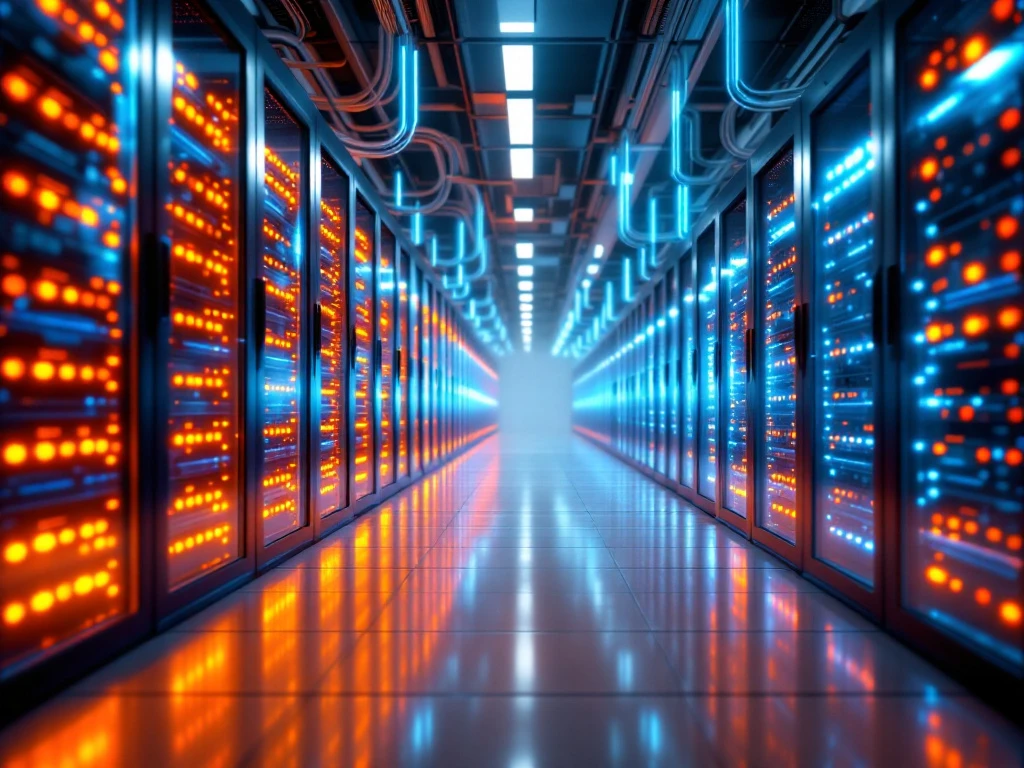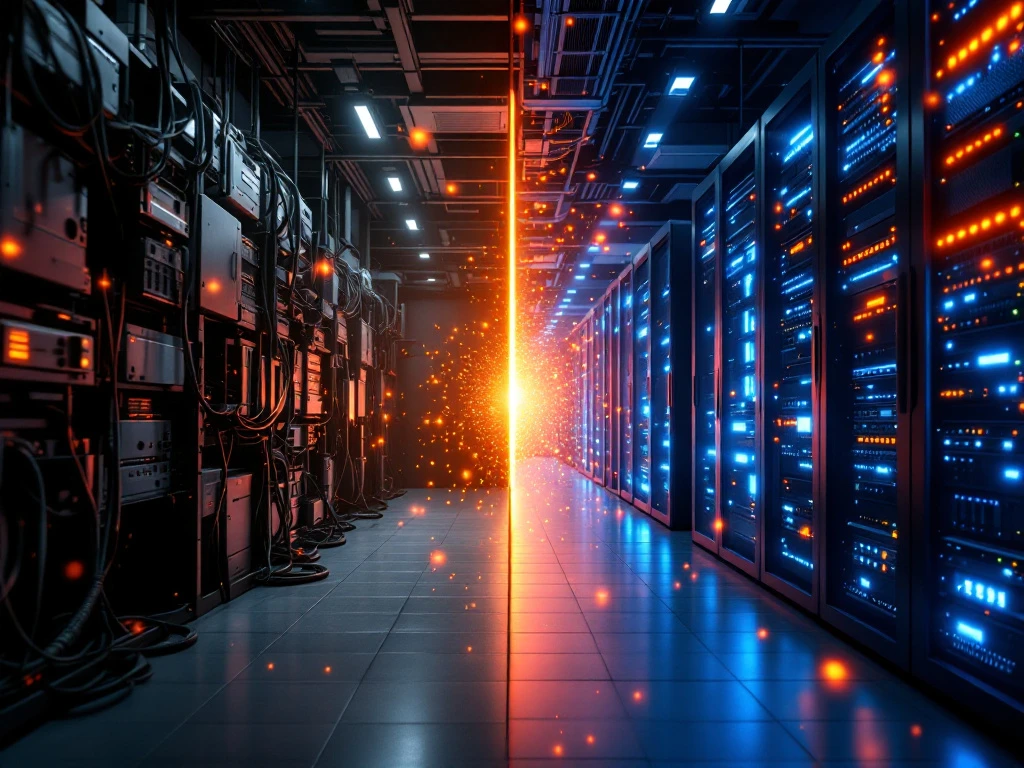
Datacenter efficiency improvement centres on optimising four key areas: cooling systems, power consumption, server utilisation, and infrastructure design. These factors directly impact operational costs, with cooling typically consuming 40% of total energy usage. Effective management reduces expenses while improving performance and environmental sustainability.
What are the biggest factors affecting datacenter efficiency today?
The primary factors affecting datacenter efficiency are cooling systems, power consumption, server utilisation rates, and infrastructure design. Cooling systems represent the largest energy drain, often accounting for nearly half of total power usage. Poor airflow management forces HVAC systems to work harder, whilst inadequate temperature monitoring leads to overcooling in some areas and hotspots in others.
Power consumption extends beyond cooling to include server hardware, networking equipment, and lighting systems. Many datacentres operate servers at low utilisation rates, sometimes below 20%, meaning significant computing resources remain idle whilst still consuming power. Infrastructure design plays a crucial role through cable management, rack spacing, and equipment placement decisions that either support or hinder efficient operations.
These efficiency challenges directly translate to higher operational costs. Energy expenses can represent 25-30% of total datacenter operating costs, making efficiency improvements a significant opportunity for cost reduction. Poor efficiency also impacts performance metrics, as overheated equipment experiences reduced lifespan and increased failure rates.
How can proper cooling and airflow management improve datacenter performance?
Hot aisle/cold aisle configurations and strategic airflow management can reduce cooling energy consumption by 20-30%. This arrangement separates equipment intake and exhaust sides, preventing hot and cold air mixing. Cold aisles face equipment fronts where air enters, whilst hot aisles capture heated exhaust air for return to cooling systems.
Temperature monitoring strategies involve placing sensors at multiple rack levels and locations to identify hotspots and overcooled areas. This data enables precise HVAC adjustments rather than cooling entire rooms to the lowest required temperature. Variable speed fans and economisers can further reduce energy consumption by adjusting cooling output based on actual demand.
HVAC optimisation techniques include raising server inlet temperatures to recommended ranges of 18-27°C, implementing containment systems to prevent air mixing, and using blanking panels to eliminate bypass airflow. These measures ensure cooling systems operate efficiently whilst maintaining equipment within safe temperature ranges. Proper airflow management also reduces fan noise and extends equipment lifespan through consistent operating conditions.
What role does server virtualization play in datacenter efficiency?
Server virtualisation reduces physical server requirements by 60-80% whilst improving resource utilisation from 15-20% to 60-80%. Virtual machines share physical hardware resources, eliminating the need for dedicated servers for each application. This consolidation dramatically reduces power consumption, cooling requirements, and physical space needs.
Virtualisation enables dynamic resource allocation, automatically moving workloads between physical servers based on demand. During low-usage periods, virtual machines can be consolidated onto fewer physical servers, allowing others to be powered down completely. This flexibility maximises hardware utilisation whilst minimising energy consumption.
Capacity planning becomes more precise with virtualisation monitoring tools that track actual resource usage across all virtual machines. This data helps identify opportunities for further consolidation and guides hardware refresh decisions. The reduced physical footprint also decreases cooling, power distribution, and maintenance requirements, creating compounding efficiency benefits throughout the datacenter infrastructure.
How do you monitor and measure datacenter efficiency effectively?
Power Usage Effectiveness (PUE) serves as the primary efficiency metric, measuring total facility power divided by IT equipment power. A PUE of 1.0 represents perfect efficiency, whilst typical datacentres achieve 1.4-1.8. Monthly PUE tracking reveals efficiency trends and helps identify improvement opportunities.
Server utilisation metrics monitor CPU, memory, and storage usage across all systems. These measurements identify underutilised servers for consolidation or decommissioning. Network utilisation tracking ensures bandwidth resources match actual demand without overprovisioning. Energy consumption monitoring at rack and device levels pinpoints inefficient equipment for replacement or optimisation.
Monitoring tools include datacenter infrastructure management (DCIM) platforms that centralise power, cooling, and space utilisation data. Environmental sensors track temperature, humidity, and airflow throughout the facility. Regular efficiency assessments compare current performance against industry benchmarks and identify specific improvement opportunities. Automated reporting systems track progress against efficiency goals and highlight areas requiring attention.
What maintenance practices ensure long-term datacenter efficiency?
Preventive maintenance schedules and professional equipment lifecycle management prevent efficiency degradation over time. Regular filter replacements maintain optimal airflow, whilst cleaning heat exchangers preserves cooling system efficiency. Scheduled inspections identify potential issues before they impact performance or cause equipment failures.
Equipment lifecycle management involves tracking hardware age, performance metrics, and energy consumption to determine optimal replacement timing. Older servers often consume significantly more power per unit of computing capacity than modern alternatives. Strategic refresh cycles balance capital investment with operational efficiency gains.
Professional onsite technical support ensures maintenance activities are performed correctly and consistently. Our experienced technicians provide comprehensive datacenter services including preventive maintenance, equipment installation, and performance optimisation. Regular maintenance prevents small issues from becoming major efficiency problems whilst extending equipment lifespan. Professional support also includes emergency response capabilities to minimise downtime when issues occur. These datacenter services ensure your facility maintains peak efficiency through proper care and expert technical support.
Frequently Asked Questions
How quickly can I expect to see ROI from datacenter efficiency improvements?
Most efficiency improvements show measurable results within 3-6 months, with cooling optimisation and server consolidation delivering the fastest returns. Simple measures like hot/cold aisle containment and raising server inlet temperatures can reduce energy costs by 15-25% immediately, whilst virtualisation projects typically pay for themselves within 12-18 months through reduced hardware and operational expenses.
What's the most cost-effective first step for improving datacenter efficiency?
Start with airflow management improvements, particularly implementing hot/cold aisle configurations and installing blanking panels. These require minimal capital investment but can reduce cooling costs by 20-30% immediately. Raising server inlet temperatures to the recommended 18-27°C range is another low-cost measure that delivers significant energy savings without compromising equipment reliability.
How do I determine if my current server utilisation rates justify virtualisation investment?
Monitor your servers for 30-60 days to establish baseline CPU, memory, and storage utilisation patterns. If average utilisation consistently falls below 40%, virtualisation will likely deliver substantial benefits. Calculate potential savings by determining how many physical servers could be eliminated and multiply by annual power, cooling, and maintenance costs per server.
What PUE target should I aim for, and is it realistic for older datacenters?
New datacenters should target PUE of 1.2-1.4, whilst older facilities can realistically achieve 1.4-1.6 with proper optimisation. Focus on incremental improvements rather than dramatic targets - reducing PUE from 1.8 to 1.5 represents significant energy savings. Even older facilities can achieve substantial efficiency gains through cooling optimisation and equipment refresh strategies.
How often should I replace servers to maintain optimal efficiency?
Modern servers typically maintain good efficiency for 4-5 years, but energy consumption per compute unit often doubles after 6-7 years compared to new equipment. Monitor power consumption per workload unit and consider replacement when newer servers offer 40-50% better performance per watt. Factor in maintenance costs and reliability issues that increase with age.
What are the biggest mistakes companies make when trying to improve datacenter efficiency?
The most common mistakes include overcooling facilities due to conservative temperature settings, implementing efficiency measures without proper monitoring to verify results, and focusing solely on equipment upgrades whilst ignoring airflow management. Many also attempt too many changes simultaneously, making it difficult to measure individual impact and optimise further improvements.
Can I improve efficiency without major capital investment or downtime?
Yes, many efficiency improvements require minimal investment and no downtime. Adjusting HVAC settings, installing blanking panels, reorganising cables for better airflow, and optimising server power management settings can be implemented during normal operations. These measures often deliver 15-30% efficiency improvements before considering equipment upgrades or infrastructure changes.
How can you improve datacenter efficiency?
